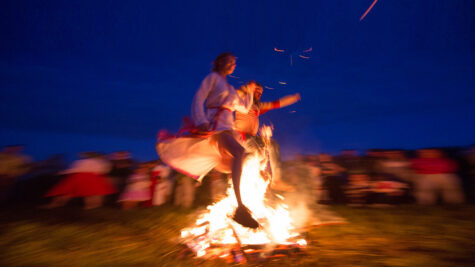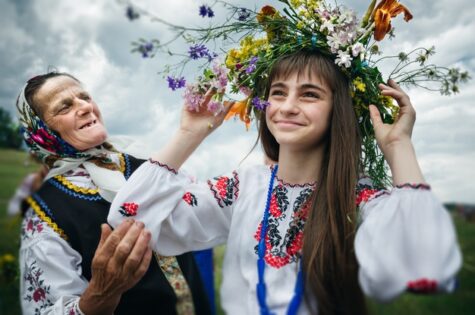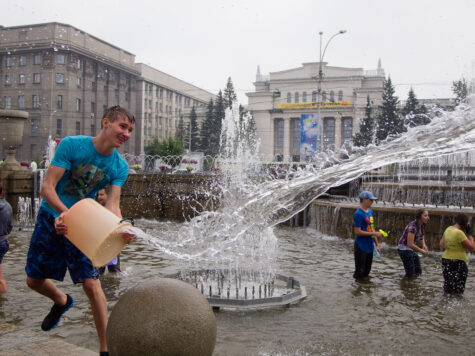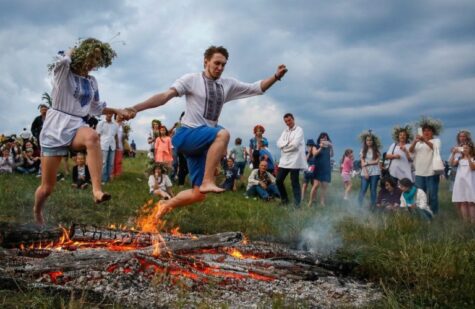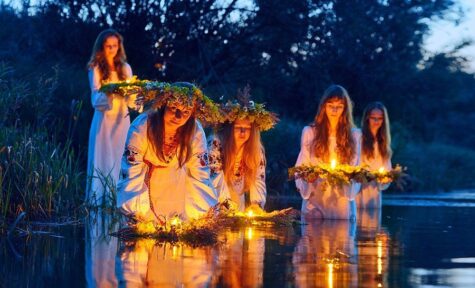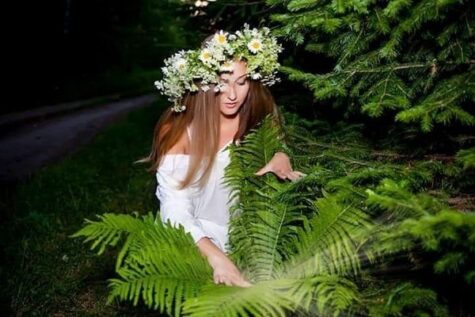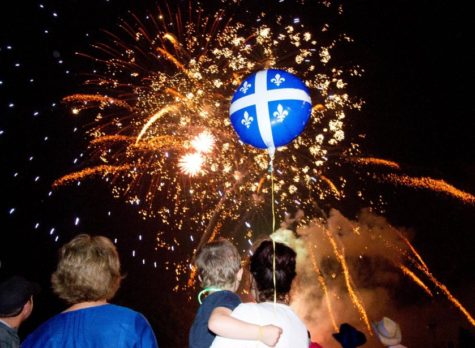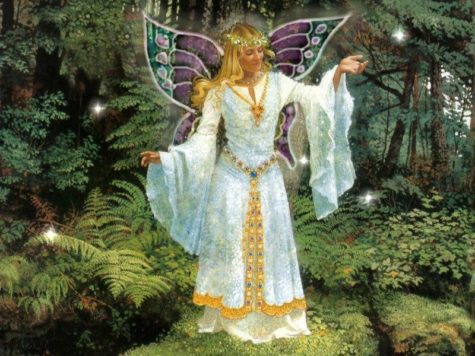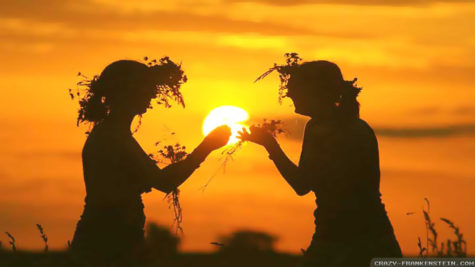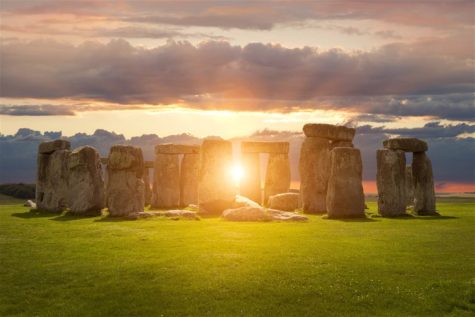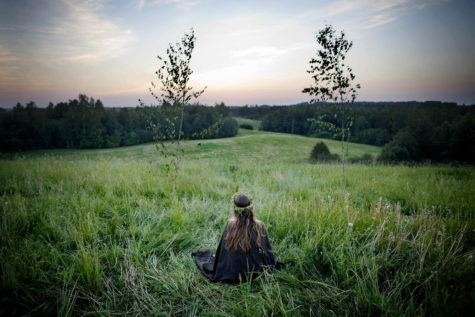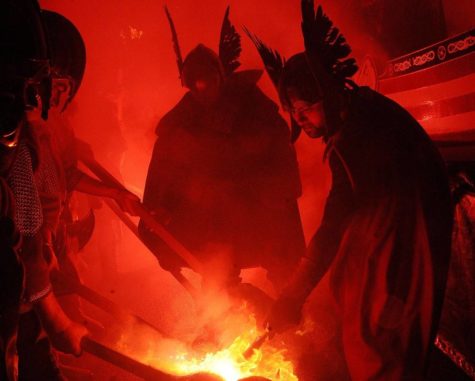Summer Solstice
Kupala Night and Ivan Kupala Day is celebrated in Ukraine, Poland, Belarus and Russia from the night of July 6 to the day of July 7 on the Gregorian calendar. This corresponds to June 23 to 24 on the traditional Julian calendar.
The celebration is linked with the summer solstice when nights are the shortest and includes a number of Slavic rituals. This holiday symbolizes the birth of the summer sun – Kupalo.
In the fourth century AD, this day was Christianized and proclaimed the holiday of the birth of John the Baptist. As a result, the pagan feast day “Kupala” was connected with the Christian “Ivan” (Russian for John) which is why the Ukrainian, Belarusian and Russian name of this holiday combines “Ivan” and Kupala which is derived from the Slavic word for bathing.
The two feasts could be connected by reinterpreting John’s baptizing people through full immersion in water. However, the tradition of Kupala predates Christianity. The pagan celebration was adapted and reestablished as one of the native Christian traditions intertwined with local folklore.
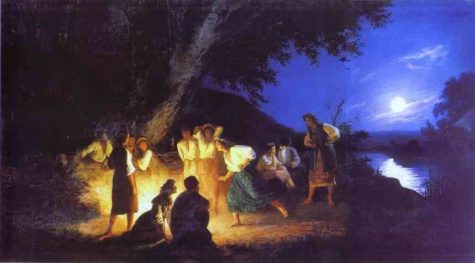
And Then It Was Banned
In the XVIII century, there were a number of documents testifying to the fierce struggle of the Church and secular authorities with the Kupala rite.
For example, in 1719 Hetman of Zaporizhzhia Army, Chairman of the Cossack state of the left bank of Ukraine, Ivan Skoropadskyi issued a decree “On parties, fisticuffs, gatherings on the holiday of Ivan Kupala etc.”, which granted the right to physically punish (tie up and beat with sticks) and excommunicate from the Church all participants of Kupala games.
In 1723, Przemysl Cathedral in Bereziv banned dancing and entertainment near the Kupala fire. In 1769, Catherine II issued a decree banning the holiday. And despite all the prohibitions, the pagan nature of folk rituals was strong. The church did not ban the holiday, but it did try to fill it with Christian content.
It is the pagan essence, mysticism, marriage-erotic motifs of Kupala rite that attracted the attention of many researchers and artists. Thanks to public ritual such art masterpieces as the Opera “Ivana Kupala” by S. Pysarevskyi; folklore work of L. Ukrainka “Kupala in Volyn”; the story of M. Gogol “Night of Ivan Kupala”; the film of Yurii Ilienko “Night on Ivan Kupala”; the Folk Opera of Y. Sankovych “When the fern blooms.” The latter during 40 years was banned and only in 2017 its world premiere took place on the stage of the Lviv Opera.
Kupala Today
At the beginning of the twentieth century Kupala rite gradually began to disappear. Today it exists in the “revived”, or rather “introduced” in Soviet times (during the anti-religious struggle) form of staged ceremony.
Although the magical meaning of rituals was leveled, and the celebration gained artistic value, the main pagan ritual actions have reached us – weaving of wreaths by girls and letting them into the water; honoring Kupala tree with dances; kindling the fire and jumping over the fire; ritual bathing; burning or sinking of trees; the burning of sacks of straw or stuffed dolls; the ceremonial dinner.
It is interesting that the name of the holiday, and the ritual fire, and decorated tree are called “Kupalo”, “Kupailo” or “Kupailytsia”. These are also the main elements of the rituals, which are based on the cult of fire, water and vegetation. Rituals symbolize the union of male (fire) and feminine (water) elements, were carried out with the aim of ensuring productivity, health, procreation.
On the territory of Ukraine for many centuries Kupala customs changed and they were not everywhere equally preserved. The majority were saved in Polissia as one of the more archaic zones of the Slavic world.
The holiday is still enthusiastically celebrated by the younger people of Eastern Europe. The night preceding the holiday (Tvorila night) is considered the night for “good humor” mischiefs (which sometimes would raise the concern of law enforcement agencies).
On Ivan Kupala day itself, children engage in water fights and perform pranks, mostly involving pouring water over people. Many of the rites related to this holiday are connected with the role of water in fertility and ritual purification.
According to ancient traditions, Ivan Kupala is the festival of the sun, and the most important role in mystical rites belongs to the power of fire. Our ancestors believed that the fire is the sun-embryo in the womb. Therefore, in the Kupala night taken to jump over the fire.
On Kupala day, young people jump over the flames of bonfires in a ritual test of bravery and faith. First, the oldest of the young men jumped over the fire.
For the highest jumpers it predicted a good harvest and prosperity for his family. Then pairs would jump, traditionally it would be a boy and a girl, but I assume that in some areas it’s permissible for pairs of any kind to take the jump together. If the couple is successful in their jump over the fire – they will certainly marry. The failure of a couple in love to complete the jump, while holding hands, is a sign of their destined separation. And anyone entering the flames during their jump can expect trouble
On the evening of July 6, unmarried girls take wreaths they have woven and throw them into the water. Unmarried men then try to grab the one belonging to the girl they are interested in. If you snag a wreath, the girl who made it will be expected to kiss you and the two of you will be paired up for the evening.
Girls may also float wreaths of flowers (often lit with candles) on rivers, in an attempt to gain foresight into their romantic relationships based from the flow patterns of the flowers on the river.
When the fun subsides, many people light candles from the hearth on pre-prepared wreath baskets and go to the river to put them on the water and thus honor their ancestors.
There is an ancient Kupala belief that the eve of Ivan Kupala is the only time of the year when ferns bloom. Prosperity, luck, discernment, and power befall whom ever finds a fern flower. Therefore, on that night, village folk roam through the forests in search of magical herbs, and especially, the elusive fern flower.
Traditionally, unmarried women, signified by the garlands in their hair, are the first to enter the forest. They are followed by young men. Therefore, the quest to find herbs and the fern flower may lead to the blooming of relationships between pairs within the forest.
It is to be noted, however, that ferns are not angiosperms (flowering plants), and instead reproduce by spores; they cannot flower.
In Gogol’s story The Eve of Ivan Kupala a young man finds the fantastical fern-flower, but is cursed by it. Gogol’s tale may have been the stimulus for Modest Mussorgsky to compose his tone poem Night on Bald Mountain, adapted by Yuri Ilyenko into a film of the same name.
Sources:
The Fête de la Saint-Jean-Baptiste, held annually on June 24, is the feast day of St John the Baptist, a Jewish preacher who according to the Christian tradition, baptized Jesus in the River Jordan. It is a day of celebration in Quebec and other areas of French Canada. The feast day of Saint John the Baptist or Midsummer was a very popular event in the Ancien Régime of France, and it is still celebrated as a religious feast day in several countries, like Denmark, Norway, Sweden, Finland, Estonia, Spain, Latvia and Lithuania.
Other names for this holiday include the following:
- Saint Jean Baptiste Day
- La Saint-Jean
- St John the Baptist Day
- Fête nationale du Québec
- Quebec’s National Holiday
This is a historical, cultural, national and religious holiday. It is observed by Quebecers, French Canadians, French Americans. Celebrations include parades, bonfires, fireworks, feasting, drinking, musical concerts, flag waving, patriotic speeches, and contests.
Symbols
The flag of Quebec and the fleurs-de-lis are widespread symbols of Saint Jean Baptiste Day. Many people choose to wear blue or white clothing to the celebrations. The fleurs-de-lis represents the flower of an iris or a lily. The fleurs-de-lis is also associated with the Virgin Mary and her purity. It was a symbol of French speaking people and their kings after King Clovis I converted to Christianity in the year 493. It was taken from the papal seal or coat-of-arms when the king converted, to symbolize the strength and significance of the French nation in its union with the Papal state. Quebec’s flag is one-and-a half times as wide as it is high and has a blue background. The background is divided into four rectangles by a cross and each of the four rectangles contains a single white fleurs-de-lis.
What Do People Do?
Various events are organized on Saint Jean Baptiste Day. These range from large scale public celebrations, such as rock and jazz concerts, sports tournaments, parades and firework displays, to small family or neighborhood happenings, such as yard sales, picnics, barbecues, bonfires and children’s entertainment. Many church bells ring in celebration and public dances and fun fairs are held. Some events may be held on the evening of June 23 and many are broadcast live on television, radio or on the Internet. The celebrations are coordinated by the Mouvement national des Québécoises et des Québécois.
Public Life
Saint Jean Baptiste Day is a public holiday in the Canadian province of Quebec. Post offices and many stores are closed. Public transport services run to a reduced schedule in some places or may not run at all in other areas, such as the province’s rural regions. If June 24 falls on a Sunday, the same day is a paid day off for those who work on Sunday. June 25 becomes a paid day off for workers who do not ordinarily work on Sunday.
Background
In ancient times, the summer solstice was honored around June 21. Midsummer festivals, such as those linked with the June solstice, were held in Europe for thousands of years. In the fifth century, Christianity spread through France. When people converted to Christianity, elements of these festivals were combined with feast days for Christian saints. June 24 – the feast day of St John was substituted for the pagan Midsummer celebrations. Traditionally, bonfires would be lit on the eve of June 24 in order to honor the saint.
In France, the celebrations around the feast day of Saint John the Baptist were widely enjoyed and French colonists introduced these traditions to North America.
The patriotic tone of the Saint Jean Baptiste Day celebrations began in 1834. In that year Ludger Duvernay, an influential journalist, visited the St Patrick’s Day celebrations in Montreal, and was inspired to create a similar event for French Canadians. In 1843, he established the Saint Jean Baptiste Society to promote the celebration of Saint Jean Baptiste Day. This organization was supported by the Catholic Church, which saw it as a way to promote social and moral progress. In 1908 St John the Baptist was designated as the patron Saint of Quebec, re-enforcing the connection between Saint Jean Baptiste Day and French-Canadian patriotism.
The celebrations were supported by the Catholic Church and were primarily religious around that time. The lighting of bonfires, a traditional custom on the Nativity of Saint John which ultimately reached back to pre-Christian Midsummer celebrations were still lit at night. In addition, the first Saint-Jean-Baptiste parades were organized. They became an important tradition over time. The procession of allegorical floats was introduced in 1874.
During and after World War I, Saint Jean Baptiste Day was barely celebrated, but in 1925 Saint Jean Baptiste Day became a provincial holiday in Quebec. After a period in the 1960s, when the structure of society in Quebec changed greatly, this holiday became very political. During the Quiet Revolution, the event took a political turn, with many riots and protests taking place.
However, in 1977 Saint Jean Baptiste Day was recognized as the ‘national’ holiday of Quebec and the mood of the celebrations gradually moved towards that of the secular celebrations in modern times.
By making it a statutory holiday, the day became a holiday for all Quebecers rather than only those of French-Canadian or Catholic origins. Celebrations were gradually secularized. While the religious significance of the civic celebration is gone, the day remains popularly called la St-Jean-Baptiste or simply la St-Jean and is still observed in churches.
Collected from various sources
People in the western Carpathian Mountains and other parts of Romania celebrate the Sânziene holiday annually, on June 24. This is similar to the Swedish Midsummer holiday, and is believed to be a pagan celebration of the summer solstice in June.
Sânziană is the Romanian name for gentle fairies who play an important part in local folklore, also used to designate the Galium verum or Cruciata laevipes flowers. Under the plural form Sânziene, the word designates an annual festival in the fairies’ honor. Etymologically, the name stands for sân (common abbreviation of sfânt – “saint”, “holy”) and zână (a word used for fairies in general).
According to the official position of the Romanian Orthodox Church, the customs actually relate to the celebration of Saint John the Baptist’s Nativity, which also happens on June 24.
The folk practices of Sânziene imply that the most beautiful maidens in the village dress in white and spend all day searching for and picking Galium verum. They are instructed to remain alone and unseen, especially by any males. Using the flowers they picked during the day, the girls create wreaths as floral crowns which they wear upon returning to the village at nightfall. They are then supposed to have turned into sânziene fairies, and dance in circle around a bonfire, into which all remains of the previous harvest are thrown. People are prevented from speaking to the girls during this ceremony, as it is presumed that the sânziene spirits possessing them might otherwise be angered or distracted.
In some regions, the girls may keep the wreaths until the following year’s Sânziene. This, they believe, ensures a fertility for their family’s land. In addition, if they place the wreath under their pillow the night right after Sânziene, it is possible that they would have a premonition of the man they are to marry (ursitul, “the fated one”). Another folk belief is that during the Sânziene night, the heavens open up, making it an adequate time for making wishes and for praying, as God is more likely to listen.
In some areas of the Carpathians, the villagers then light a big wheel of hay from the ceremonial bonfire and push it down a hill. This has been interpreted as a symbol for the setting sun (from the solstice to come and until the midwinter solstice, the days will be getting shorter).
In cultural reference. The consequences of heavens opening on Sânziene are connected by some to paranormal events reported during that period of each year. According to popular beliefs, strange things, both positive and negative, may happen to a person wandering alone on Sânziene night. Strange ethereal activities are believed to happen especially in places such as the Băneasa forest (near the capital of Bucharest) or the Baciu forest (near the city of Cluj-Napoca).
From: Wikipedia
The celebration of Midsummer’s Eve was from ancient times linked to the summer solstice. The dates that Midsummer is celebrated vary slightly from year to year, and from country to country. In Sweden, Midsummer Day is publicly celebrated during a weekend between June 20 and 26. In other countries, it is celebrated on the date of the Summer Solstice which falls between June 20 and June 21.
People believed that mid-summer plants had miraculous and healing powers and they therefore picked them on this night. Bonfires were lit to protect against evil spirits which were believed to roam freely when the sun was turning southwards again.
The solstice itself has remained a special moment of the annual cycle of the year since Neolithic times. These ancient observances were not on the day as we define it – at midnight or at dawn. Instead the celebrations began on the pre-Christian beginning of the day, which falls on the previous evening.
More about these summer celebrations can be found here:
- 2-1/2 gallons water
- 1 cup meadowsweet herb
- 1 cup woodruff sprigs
- 1 cup heather flowers
- 3 cloves
- 1 cup honey
- 1/4 cup brown sugar
- 1 cup barley malt
- 1 oz. brewer’s yeast
Pour the water into a large cauldron or kettle. Bring to a boil and add the meadowsweet herb, woodruff sprigs, heather flowers, and cloves. Boil for one hour and the add the honey, brown sugar, and barley malt. Stir thirteen times in a clockwise direction and then remove from heat.
Strain through a cheesecloth and allow the mead to cool to room temperature. Stir in the brewer’s yeast. Cover with a clean towel and let it stand for one day and one night. Strain again, bottle, and then store in a cool place until ready to serve.
Midsummer Ritual Mead is an ideal drink to serve at Summer Solstice Sabbats, as well as during all Cakes and Ale Ceremonies and Esbats.
From: The Wicca Spellbook
“Solstice” is derived from two Latin words: “sol” meaning sun, and “sistere,” to cause to stand still. This is because, as the summer solstice approaches, the noonday sun rises higher and higher in the sky on each successive day. On the day of the solstice, it rises an imperceptible amount, compared to the day before. In this sense, it “stands still.”
(In the southern hemisphere, the summer solstice is celebrated in December, also when the night time is at a minimum and the daytime is at a maximum.)
Why does the summer solstice happen?
On this day, typically June 21, the daytime hours are at a maximum in the Northern hemisphere, and night time is at a minimum. It is officially the first day of summer. It is also referred to as Midsummer because it is roughly the middle of the growing season throughout much of Europe.
The seasons of the year are caused by the 23.5° tilt of the earth’s axis. Because the earth is rotating like a top or gyroscope, the North Pole points in a fixed direction continuously — towards a point in space near the North Star. But the earth is also revolving around the sun. During half of the year, the southern hemisphere is more exposed to the sun than is the northern hemisphere. During the rest of the year, the reverse is true.
At noontime in the Northern Hemisphere the sun appears high in the sky during summertime, and low during winter. The time of the year when the sun reaches its maximum elevation occurs on the summer solstice — the day with the greatest number of daylight hours. It typically occurs on, or within a day or two of, June 21, the first day of summer. The lowest elevation occurs about Dec 21 and is the winter solstice — the first day of winter, when the night time hours reach their maximum.
Activities for the Summer Solstice:
- Rise early on the summer solstice and greet the sun as it begins to brighten the sky.
- Create protective amulets out of rue, rowan and basil. Place these herbs in a clean white or gold cloth, and tie the cloth securely.
- Make a protective charm for your home or business. Tie a few cinnamon sticks together and position them over the door of your home or office.
- Consume foods that honor the power of the sun. Include foods that are yellow and orange. Lemons are particularly good for this purpose and can be consumed in desserts as well as in tea or lemonade.
- Leave some food out for the fairy folk that are active at midsummer. Good choices include milk, wine, honey, water and fresh bread.
Information collected from various sources
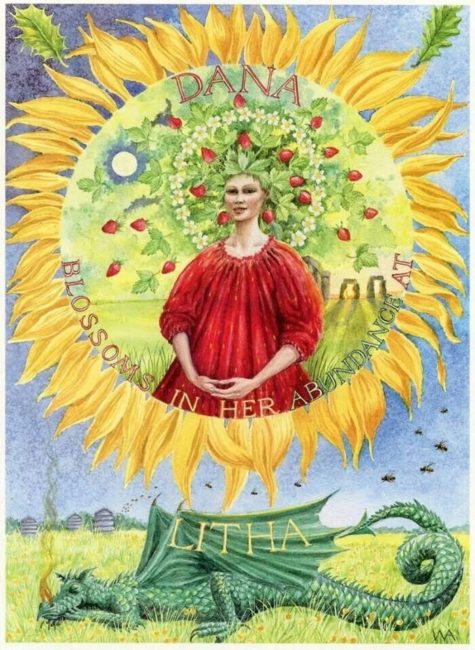 Litha (pronounced “LITH-ah”) is one of the Lesser Wiccan Sabbats and is usually celebrated on June 21st, but varies somewhat from the 20th to the 23rd, dependent upon the Earth’s rotation around the Sun (check the calendar).
Litha (pronounced “LITH-ah”) is one of the Lesser Wiccan Sabbats and is usually celebrated on June 21st, but varies somewhat from the 20th to the 23rd, dependent upon the Earth’s rotation around the Sun (check the calendar).
According to the old folklore calendar, Summer begins on Beltane (May 1st) and ends on Lughnassadh (August 1st), with the Summer Solstice midway between the two, marking MID-Summer. This makes more logical sense than suggesting that Summer begins on the day when the Sun’s power begins to wane and the days grow shorter.
The Litha Sabbat is a time to celebrate both work and leisure, it is a time for children and childlike play. It is a time to celebrate the ending of the waxing year and the beginning of the waning year, in preparation for the harvest to come. Midsummer is a time to absorb the Sun’s warming rays and it is another fertility Sabbat, not only for humans, but also for crops and animals.
Wiccans consider the Goddess to be heavy with pregnancy from the mating at Beltane – honor is given to Her. The Sun God is celebrated as the Sun is at its peak in the sky and we celebrate His approaching fatherhood – honor is also given to Him. The faeries abound at this time and it is customary to leave offerings – such as food or herbs – for them in the evening.
The cycle of fertility has been expressed in many god-forms. One pair of these – which has persisted from early Pagan times to modern folklore – is that of the Oak King and the Holly King, Gods respectively of the Waxing Year and the Waning Year. The Oak King rules from Midwinter to Midsummer – the period of Fertility, Expansion and Growth; while the Holly King reigns from Midsummer to Midwinter – the period of Harvest, Withdrawal and Wisdom.
They are the light and dark twins, each being the other’s alternate self, thus being one. Each represents a necessary phase in the natural rhythm, therefore both are good. At the two changeover points, they symbolically meet in combat. The incoming twin – the Oak King at Midwinter, the Holly King at Midsummer – “slays” the outgoing one. But the defeated twin is not actually considered dead – he has merely withdrawn during the six months of his brother’s rule.
On Midsummer Night, field and forest elves, sprites, and fairies abound in great numbers – making this a great time to commune with them. Litha is considered one of the best times to perform magicks of all kinds, for it is considered a time of great magickal power. Especially effective magick and spells at this time include the performance of those for love, healing and prosperity. A wreath can be made for your door with yellow feathers for prosperity and red feathers for sexuality – intertwined and tied together with ivy.
This is also a very good time to perform blessings and protection spells for your pets or other animals. You may want to choose to include your pet within your cast Circle at this Sabbat celebration, and even present him or her with a special gift (such as a tiny pentacle to attach to his or her collar). I have done this and found it very rewarding and heartwarming.
Nurturing and love are key actions related to Midsummer. If you haven’t yet done so, Litha is a good time to perform your Self-Dedication Ceremony… or – if you have been practicing Wicca for a while – you may choose to perform a simple Re-dedication/Affirmation as a part of your Sabbat celebration. Ritual actions for Litha might include placing a flower-ringed cauldron upon your altar, plunging of the sword (or athame) into the cauldron, balefire leaping (outdoors) and the gathering and drying of herbs. Herbs can be dried over the ritual fire if you’re celebrating outdoors. Leap the bonfire for purification and renewed energy. Ritually, use mirrors to capture the light of the Sun or the flames of the fire.
Found at: Fortune City
Although Midsummer Day occurs at the summer solstice, or what we think of as the beginning of summer, to the farmer it is the midpoint of the growing season, halfway between planting and harvesting, and an occasion for celebration.
The most common other names for this holiday are the Summer Solstice or Midsummer, and it celebrates the arrival of Summer, when the hours of daylight are longest. The Sun is now at the highest point before beginning its slide into darkness.
Celebrating Midsummer Day
Although it’s also the feast day of St. John the Baptist, it features pagan traditions such as bonfires, fire walking, and a carnival atmosphere, all of which took place on Midsummer Eve. Certainly, it’s a night of magic and soothsaying as well, for as Washington Irving said, this is a time “when it is well known all kinds of ghosts, goblins, and fairies become visible and walk abroad.” After Midsummer Day, the days shorten.
In Sweden and Norway at the Solstice, people made wheels of fortune. Some of the wheels were wrapped in straw, set on fire, and rolled down hill. Other wheels were decorated and kept. These were used in two ways: One, the wheel was rolled away from a person to take away misfortunes; two, it was rolled toward a person to bring all kinds of good fortune.
Variations on the Midsummer celebrations:
People around the world have observed spiritual and religious seasonal days of celebration during the month of June. Most have been religious holy days which are linked in some way to the summer solstice.
- Scottish Pecti-Witans celebrate Feill-Sheathain on July 5th.
- In the Italian tradition of Aridian Strega, this Sabbat (Strega Witches call them Treguendas rather than Sabbats) is known as Summer Fest – La Festa dell’Estate.
- Scandinavians celebrate this holiday at a later date and call it Thing-Tide.
- In England, June 21st is “The Day of Cerridwen and Her Cauldron”.
- In Ireland, this day is dedicated to the faery goddess Aine of Knockaine.
- June 21st is “The Day of the Green Man” in Northern Europe.
In Lithuanian tradition, the dew on Midsummer Day was said to make young girls beautiful and old people look younger. It was also thought that walking barefoot in the dew would keep one’s skin from getting chapped.
It was customary to honor all men named John on this day by fixing wreaths of oak leaves around their doors. This is usually done in secret, and John must guess who did it or catch the person in the act, in which case he must give the person a treat.
Midsummer Celebrations in Ancient Times:
The solstice itself has remained a special moment of the annual cycle of the year since Neolithic times. The concentration of the observance is not on the day as we reckon it, commencing at midnight or at dawn, but the pre-Christian beginning of the day, which falls on the previous eve. Other names for this time in the Wheel of the Year include:
- Alban Heruin (Caledonii or the Druids)
- Alban Hefin (Anglo-Saxon Tradition)
- Sun Blessing, Gathering Day (Welsh)
- Whit Sunday, Whitsuntide (Old English)
- Vestalia (Ancient Roman)
- Feast of Epona (Ancient Gaulish)
- All-Couple’s Day (Greek)
Ancient Celts: Druids, the priestly/professional/diplomatic corps in Celtic countries, celebrated Alban Heruin (“Light of the Shore”). It was midway between the spring Equinox (Alban Eiler; “Light of the Earth”) and the fall Equinox (Alban Elfed; “Light of the Water”). “This midsummer festival celebrates the apex of Light, sometimes symbolized in the crowning of the Oak King, God of the waxing year. At his crowning, the Oak King falls to his darker aspect, the Holly King, God of the waning year…” The days following Alban Heruin form the waning part of the year because the days become shorter.
Ancient China: Their summer solstice ceremony celebrated the earth, the feminine, and the yin forces. It complemented the winter solstice which celebrated the heavens, masculinity and yang forces.
Ancient Egypt:In Ancient Egypt, summer solstice was the most important day of the year. The sun was at its highest and the Nile River was beginning to rise. Special ceremonies were held to honor the Goddess Isis. Egyptians believed that Isis was mourning for her dead husband, Osiris, and that her tears made the Nile rise and well over. Accurately predicting the floods was of such vital importance that the appearance of Sirius, which occurs around the time of the summer solstice, was recognized as the beginning of the Egyptian New Year.
Ancient Gaul: The Midsummer celebration was called Feast of Epona, named after a mare goddess who personified fertility, sovereignty and agriculture. She was portrayed as a woman riding a mare.
Ancient Germanic, Slav and Celtic tribes in Europe: Ancient Pagans celebrated Midsummer with bonfires. “It was the night of fire festivals and of love magic, of love oracles and divination. It had to do with lovers and predictions, when pairs of lovers would jump through the luck-bringing flames…” It was believed that the crops would grow as high as the couples were able to jump. Through the fire’s power, “…maidens would find out about their future husband, and spirits and demons were banished.” Another function of bonfires was to generate sympathetic magic: giving a boost to the sun’s energy so that it would remain potent throughout the rest of the growing season and guarantee a plentiful harvest.
Ancient Rome: The festival of Vestalia lasted from June 7 to June 15. It was held in honor of the Roman Goddess of the hearth, Vesta. Married women were able to enter the shrine of Vesta during the festival. At other times of the year, only the vestal virgins were permitted inside.
Ancient Sweden: A Midsummer tree was set up and decorated in each town. The villagers danced around it. Women and girls would customarily bathe in the local river. This was a magical ritual, intended to bring rain for the crops.
Information collected from various sources
At the outbreak of the Peloponnesian War, the Athenians allowed the founding of a sanctuary for the Goddess Bendis and shortly afterward created a state festival, the Bendideia, for her.The first celebration was held on the 19th of Thargelion (May–June), 429 BC, at the Piraeus, the seaport of Athens.
Many pagan calendars list June 6th as the modern equivalent date for this festival honoring the Moon Goddess of Thrace. Other sources give that her festivals were held on the full moon preceding or coinciding with the solstice – and if so, the dates would vary from year to year.
For a description of the festival we have this excerpt of a conversation between Socrates and a friend describing that festival (from Plato’s Republic):
Sokrates: “I went down yesterday to the Peiraios (Piraeus) with Glaukon (Glaucon), the son of Ariston, to pay my devotions to the Goddess [Bendis], and also because I wished to see how they would conduct the festival since this was its inauguration. I thought the procession of the citizens very fine, but it was no better than the show, made by the marching of the Thrakian contingent [i.e. the mercenary force who policed ancient Athens]. After we had said our prayers and seen the spectacle we were starting for town . . . “
‘Do you mean to say,’ interposed Adeimantus, ‘that you haven’t heard that there is to be a torchlight race this evening on horseback in honor of the Goddess?’
‘On horseback?’ said I. ‘That is a new idea. Will they carry torches and pass them along to one another as they race with the horses, or how do you mean?’
‘That’s the way of it,’ said Polemarkhos, ‘and, besides, there is to be a night festival which will be worth seeing. For after dinner we will get up and go out and see the sights and meet a lot of the lads there and have good talk . . . Let this complete your entertainment, Sokrates, at the festival of Bendis.’
